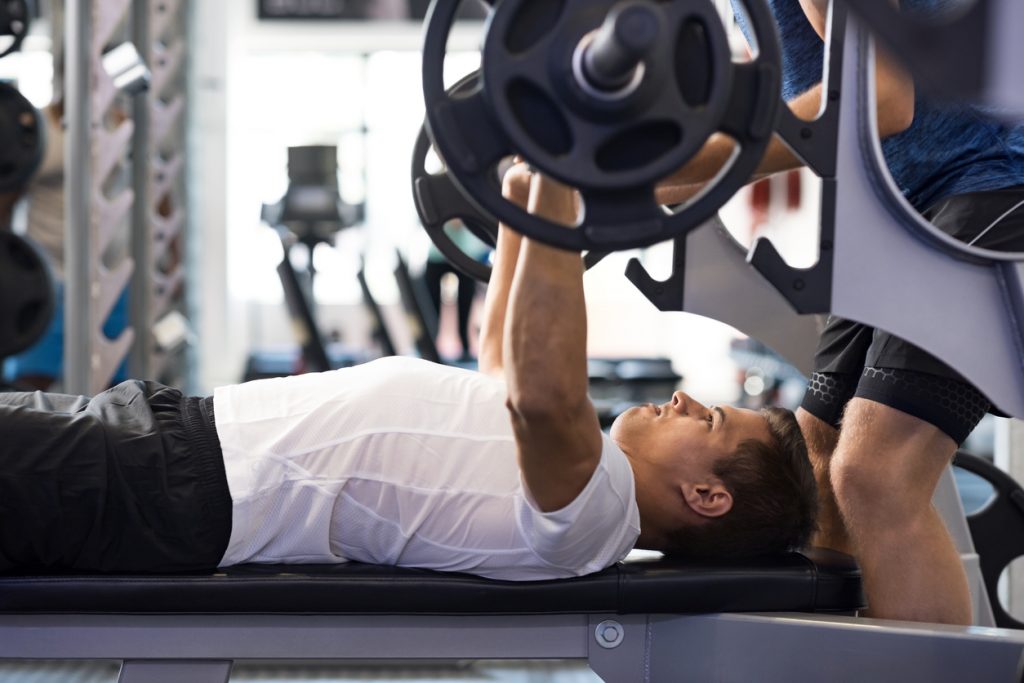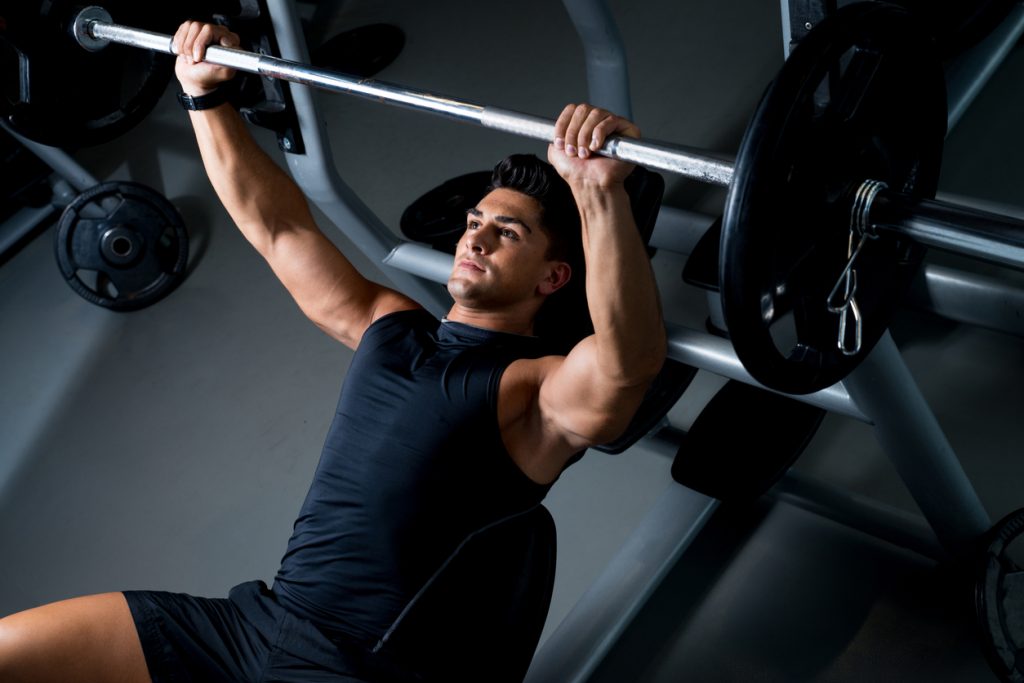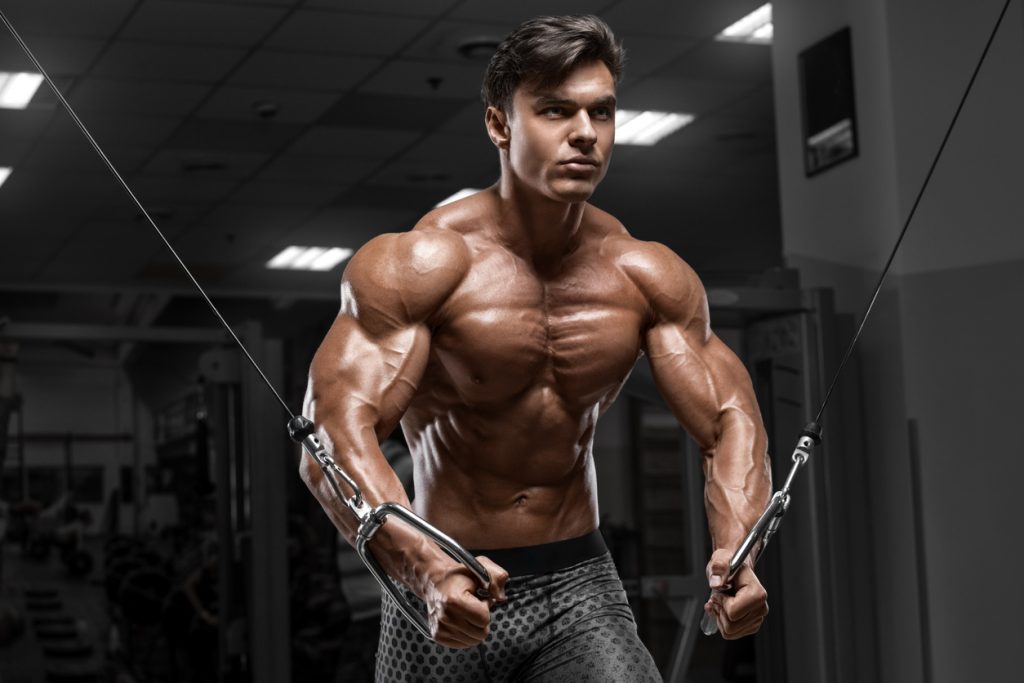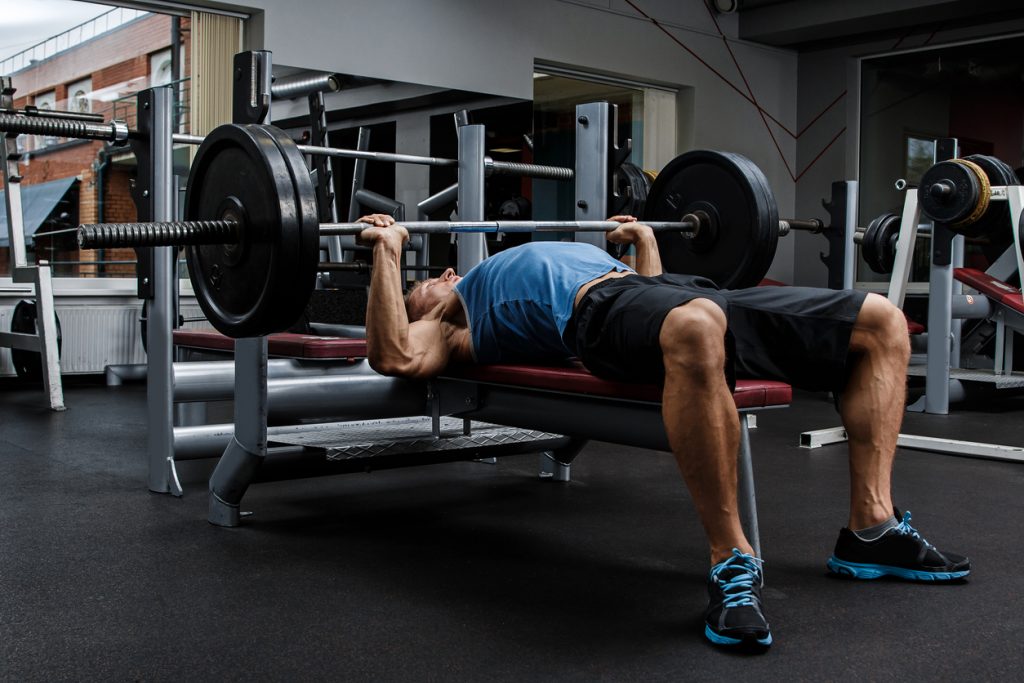The bench press is a poly-articular strength and muscle building exercise. It works the muscles of the trunk, mainly pectoralis major and minor, but also the anterior deltoid and triceps. Depending on the way the exercise is performed and/or the position, other muscles can intervene and maintain the balance, such as the large dorsal, the large serratus, the arm muscle caraco brachii, the glutes, the lumbar or the abdominals.
The bench press is known to be complex, yet considered one of the "King" movements. Indeed, any athlete and sportsman wishing to develop a chest worthy of the champions of the golden age of bodybuilding will certainly not spare themselves on this exercise, oh so beneficial for the pectoral muscles, but also for the shoulders and triceps.
To carry out a bench press is not as simple as one might think. This basic movement makes indeed work mainly the pectoral muscles, the most powerful and the biggest of the thoracic zone.
It should be remembered that the fibres of the pectoral muscles are convergent, i. e. the muscles work mainly in adduction (movement which brings the members closer to the axis of the body). It will be thus essential to incorporate in the sessions of exercises of the sportsman of the movements allowing to work in this direction, like the spread dumbbells / machines, for example.
Advice to follow for Bench Press
Now that we have acquired these few anatomical notions, it is time to move on to the exercise. In order to perform a bench press, it is necessary to define the reasons and objectives that push you to perform it.
It is important to answer the following questions: What are my weak points? Have I ever had any injuries or pathologies? What are my goals?
Why ask these questions? Simply because a bodybuilder, for example, will not work in the same way as an athlete who is preparing for a competition.
Faced with this, it is important to apply these 9 tips to get better results:
1) Try to have an adequate back/trapods support for a better stability
2) Adopt an arm spacing according to flexibility and morphotype, which can be longline: long and thin limbs, or shortline: short and thick limbs. If you lack joint and muscle flexibility, or if the rib cage is not sufficiently developed, while the arms are relatively long, it is advisable to bring the distance between the hands closer together and to rotate the elbow slightly inwards (powerlifter style). The small disadvantage to this is the greater involvement of the triceps and anterior deltoids. Steps should be taken to avoid injury.
3) Adopt the right grip. To do this, it is advisable to hook the bar with the thumb
4) During the bench press, move the chest out and keep the shoulders back, pressed against the bench.
5) Do a strength transfer: to do this, keep your feet firmly planted on the floor. As soon as the bar touches the chest, push it back from the heels, as if all the force of this impulse returns to the trunk, the arms and the chest.
7) Lower the bar towards the middle of the chest so as not to impose too much stress on the rotator cuff. This gesture depends on the athlete's joint and muscle mobility, and the targeted work area.
8) Proceed to a sheathing: for this, the sheathing must be maintained. The back will be slightly arched, care must be taken. During the extension, it is necessary to breathe. Do not lock in at the top of the movement, and work in continuous tension, without bouncing or cheating. Avoid slacking off, and make sure to hold the load throughout the downward phase.
9) Work at the right load: even if we want to surpass ourselves, or that our brain pushes us to increase our load, it is necessary to listen to the body and to put our ego aside. In order to avoid injuries, it is always advisable to work with an adequate weight (that you control). It is also necessary to work on coordination, placement, and the mind-muscle link (neuromuscular connection).
To conclude
To conclude, it is important to remember some principles necessary for any physical activity:
- First of all, it is always necessary to work on the weak points at the beginning of the session (maximum energy, concentration. . )
- Secondly, it is necessary to work the muscles, and not the ego: handle only a load that you control.
- When one starts or when one tries relatively heavy bars with more experience, it is advised to be helped by someone, to ensure safety (to have a spotter!)
- As the bench press engages a number of stabilizing muscles (back, trapezius, triceps, deltoids), it is necessary to strengthen these muscles, both in terms of strength and physical and aesthetic development.




